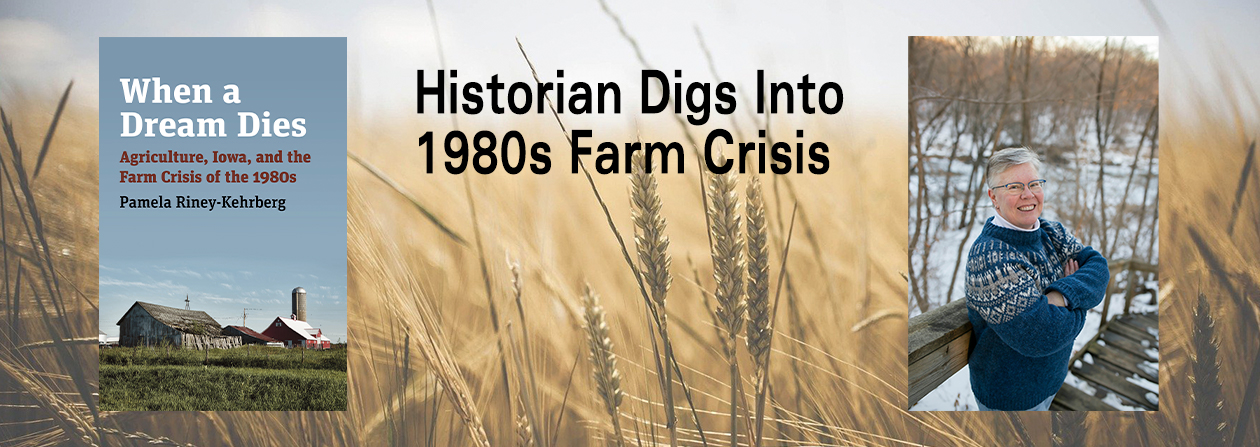
Iowa State University Distinguished Professor of History Pamela Riney-Kehrberg’s new book – When a Dream Dies: Agriculture, Iowa, and the Farm Crisis of the 1980s –was recently published by the University Press of Kansas. The research for this innovative work of social history draws extensively on sources in the Iowa Women’s Archives, the Drake University Political Papers Collection, records in the State Historical Society of Iowa, the Parks Library Special Collections here at ISU, Iowa Cooperative Extension Documents and archives in Indiana and Kansas. Five years of research followed by two years of writing yielded an outstanding example of how understanding the past illuminates the present: farm crises are never far away in contemporary Iowa.
This project began when Riney-Kehrberg found, tucked into the files of Iowa State’s Cooperative Extension Service, a small, innocuous looking pamphlet with the title Lenders: Working through the Farmer-Lender Crisis. The Cooperative Extension Service intended this publication to improve bankers’ empathy and communication skills, especially when facing farmers showing “Suicide Warning Signs.” After all, they were working with individuals experiencing extreme economic distress, and each banker needed to learn to “be a good listener.”
Just as important as the words on the page were the silences. Iowa State published this pamphlet in April 1986, just four months after entrepreneurial farmer Dale Burr of Lone Tree, Iowa, killed his wife, his banker, a neighbor, and finally himself. An entrepreneurial farmer from generations of farming families, Burr found himself in debt to the tune of $500,000 and saw no way out. The unwritten subtext of the little pamphlet was “beware.” If bankers failed to adapt to changing circumstances, further murders could result.
This was Iowa in the 1980s. The state was at the epicenter of a nationwide agricultural collapse unmatched since the Great Depression. In When a Dream Dies, Riney-Kehrberg examines the lives of ordinary Iowa farmers as the Midwest experienced the worst of the crisis. While farms failed and banks foreclosed, rural and small-town Iowans watched and suffered, struggling to find effective ways to cope with the crisis. If families and communities were to endure, they would have to think about themselves, their farms, and their futures in new ways. For many Iowa families, this meant restructuring their lives or moving away from agriculture completely. This book helps to explain how this disaster changed children, families, communities, and the development of the nation’s heartland in the late twentieth century.